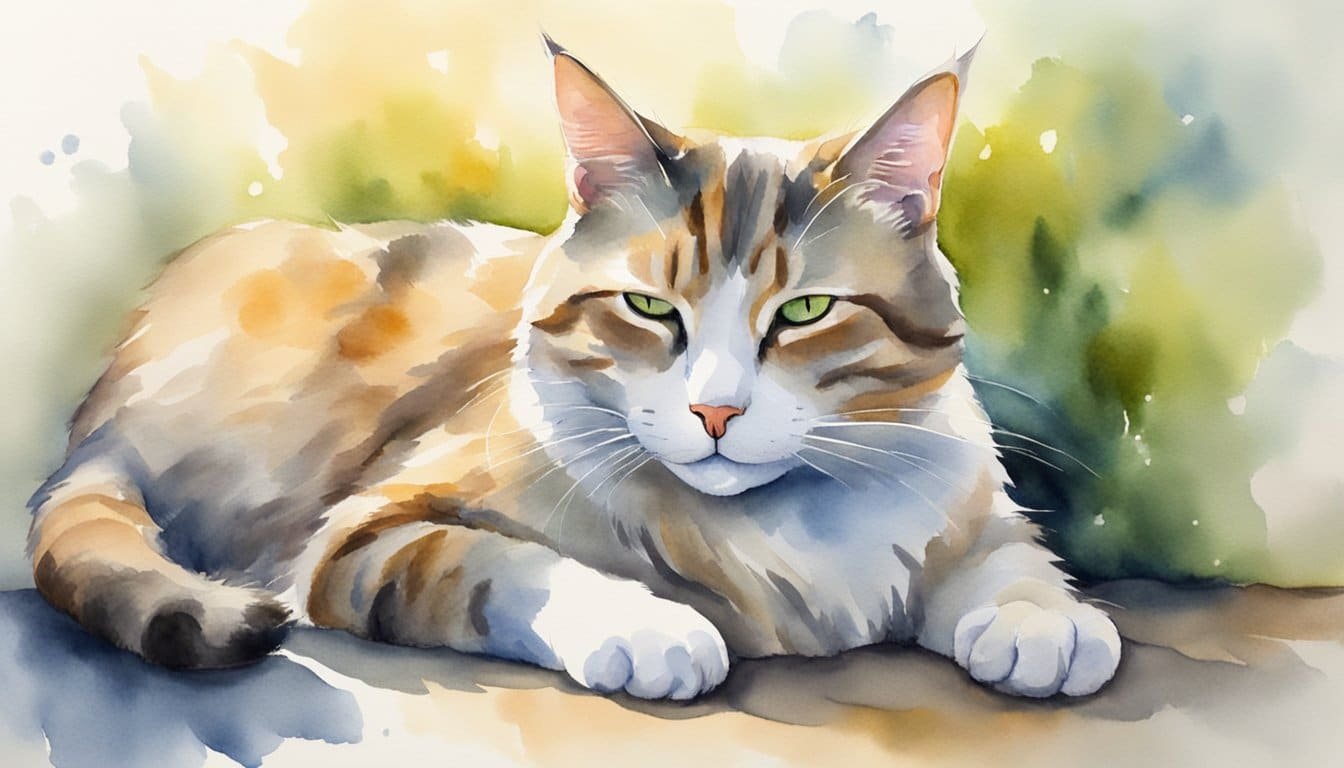The Science of Purring
Cats have a unique ability to soothe themselves and convey contentment through purring, a behavior that has fascinated researchers and pet owners alike. The mechanics behind this comforting hum involve a combination of laryngeal muscle control and neurological signals.
Biological Mechanisms
Purring in cats involves the rapid movement of the laryngeal muscles, specifically the muscles of the voice box or larynx. This movement is controlled by a neural oscillator within the cat’s brain. As the cat breathes, air touches the vibrating muscles, which alternately dilate and constrict the glottis (space between the vocal cords in the throat). This results in a consistent pattern of vibrations that produce the characteristic purr, with a frequency ranging typically between 25 to 150 hertz. Researchers observe that these purring frequencies can occur during both inhalation and exhalation, making it a continuous sound.
- Vibrating Laryngeal Muscles
- Neural Oscillator
- Glottis Manipulation
- Frequency of 25-150 Hz
- Continuous During Breathing
For a deeper dive into the purring mechanism, one can view a study on the link between muscle movement and the purr here.
Healing Benefits
Purring is not just about expressing contentment; it has been linked to healing benefits, both for the cat and potentially for humans in close proximity. The frequency of a cat’s purr can promote the healing of bones, tendons, and muscles, and it’s suggested as a form of pain relief and bone growth stimulation. This surprising healing mechanism is a topic of great interest in veterinary medicine and bioacoustic research. In addition to these physical advantages, purring can also serve as a form of self-soothing during moments of stress or while recovering from an injury.
Cats may also purr to communicate needs, such as at feeding time or when seeking attention for comfort. The purr may even have a psychological effect on human caretakers, offering a sense of bonding and pleasure during interactions with their feline friends.
- Bone Healing
- Pain Relief
- Self-Soothing
- Communication
For insights into the healing benefits of purring, consider this study that looks into the healing mechanism and bone recovery here.
Communicative Functions of Purring

When a cat purrs, it’s not just a random sound—it’s a complex mode of communication harnessing a wide range of emotions and messages. From signaling contentment to orchestrating interactions with humans and other cats, the simple purr has profound communicative functions.
Interaction with Humans
Cats usually engage in purring as a form of communication with their owners, often indicating a state of ease and contentment. For instance, when a cat approaches its owner with a gentle purr, it’s likened to a human’s hello, signaling a friendly greeting or soliciting attention. Interestinglyhow do cats purr, this purring can also be a solicitation strategy—a “solicitation purr”—embedded within the usual purr, which many cat owners report as sounding more urgent and is often effective at gaining their attention.
Purring can also occur when cats feel vulnerable, such as when they are recovering from an injury. This suggests that purrs don’t exclusively denote a happy cat, but can also indicate a need for care or reassurance from their human companionscat vocalizations.
Social Signals Among Cats
Within the feline world, purring is a multifaceted social signal. Kittens first purr while nursing, which may serve as a bonding signal between them and their mother, who is often blind and deaf at birth, reinforcing the mother-kitten connection through vibrations. As the kittens grow, these vocalizations play an integral role in their social interactions with litter-mates and other cats, conveying a variety of contexts from greeting to comforting one another.
Socially, cats may also emit a purr to signify a willingness for close proximity or grooming, implying the behavior serves as a bonding mechanism within cat communities. Cats may use purring combined with body language to communicate passiveness and denote that they are not a threat, thus promoting peaceful interactionsCommunication in the domestic cat.
Interestingly, the domestic cat isn’t the only feline that purrs; larger cats, like pumas, also engage in this behavior, though their purposes may varyPurring and similar vocalizations in mammals. Understanding the nuances of purring can deepen the bond between cats and their human companions, shedding light on the sophisticated nature of cat communication.
Emotional States and Purring

Cats communicate a symphony of emotions through their purring. It’s a common belief that a purring cat is a happy creature. Indeed, they may purr when experiencing pleasure or during peaceful moments like being petted or cuddled.
However, purring reflects more than contentment. It’s complex, serving several purposes across various circumstances. For instance, kittens purr to bond with their mother. The vibrations can be a homing signal, as mama cats purr back, creating a loop of soothing sounds and vibrations.
But not all purrs signal a good mood. They can also be a coping mechanism for stress, pain, or discomfort. Some researchers link the “solicitation purr,” a mix of purr and a cry within the usual purr, to a more insistent demand for attention, often compared to the urgency of a baby’s cry.
Beyond emotions, there’s a physiological angle to purring. The low-frequency vibrations may promote healing, suggest energy conservation, and even relieve pain. It can benefit both the purring feline and humans they are close to, potentially providing a therapeutic effect that can soothe the soul and aid in regulated breathing for a calm mind.
So, whether a domestic cat or their wild cousins, purring is an enigmatic feline trait, resounding with depth and variety, reflecting a spectrum of emotions and physical states that stretch far beyond a simple meow.

